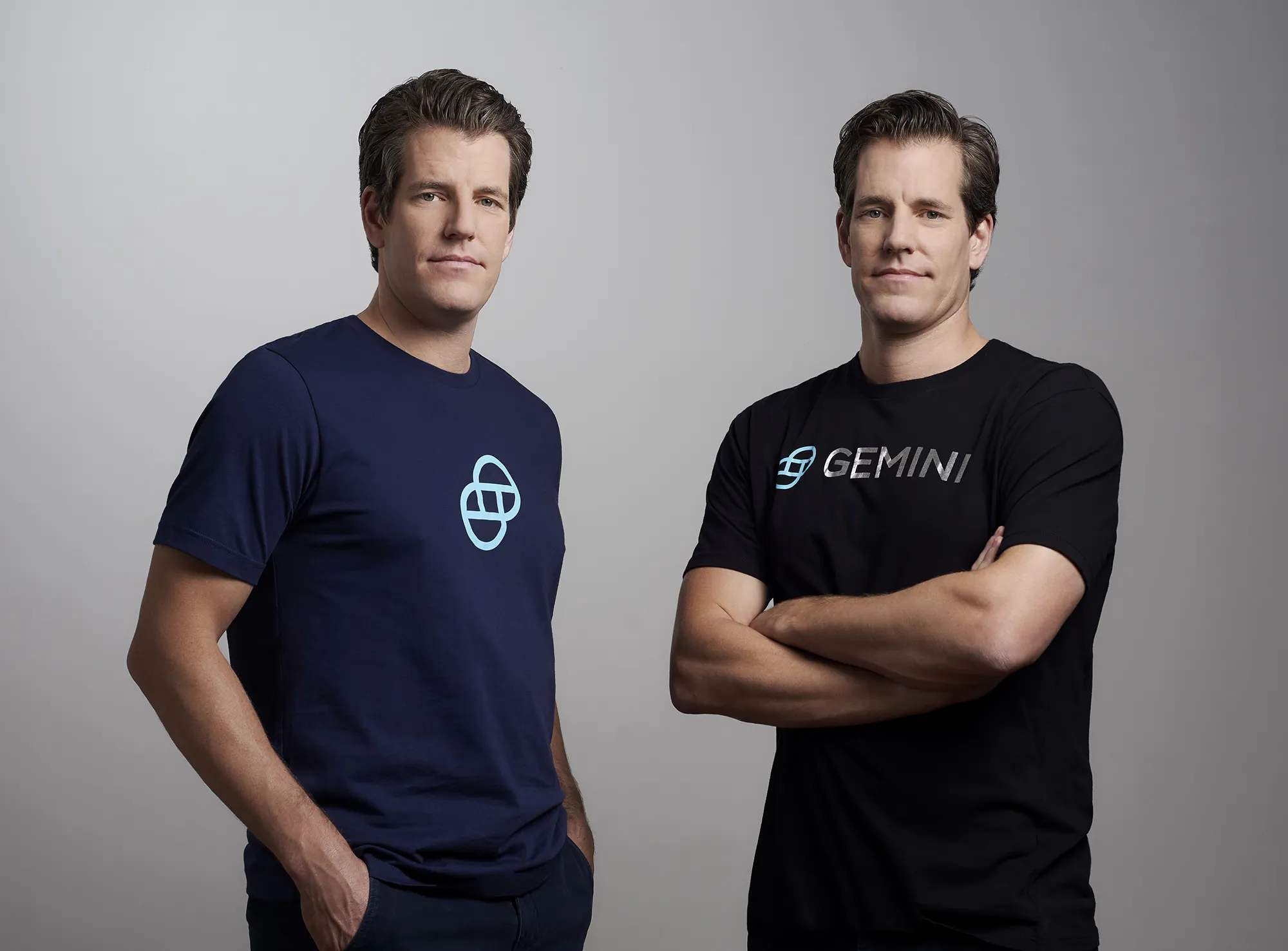
Crypto Exchange Gemini Goes Public at $28 Per Share After 20x Oversubscription
Gemini's $425M IPO Caps Crypto's Wall Street Renaissance as Institutional Money Pours In
The cryptocurrency exchange landscape witnessed another milestone Thursday as Gemini Space Station priced its initial public offering at $28 per share—well above its revised range and capping the most active year for crypto listings since the sector's inception. The deal, which raised approximately $425 million for the Winklevoss twins' platform, represents more than just another IPO; it signals a fundamental shift in how institutional capital views digital asset infrastructure.

Trading began Friday on the Nasdaq Global Select Market under ticker "GEMI," with the offering experiencing 20-times oversubscription despite an already twice-revised price range that climbed from an initial $17-19 to $24-26 before settling at $28. The reception underscores growing institutional appetite for crypto exposure through regulated, publicly-traded vehicles rather than direct token holdings.

When Scarcity Meets Demand: The New IPO Playbook
Gemini's approach to its public debut reflects a calculated strategy of engineered scarcity. Rather than maximizing capital raise, the company capped proceeds at $425 million while leaving significant demand unmet—a move designed to ensure strong day-one trading performance and minimize dilution for existing shareholders.
The 15.18 million Class A shares offered represent a fraction of potential demand, with underwriters granted a standard 30-day greenshoe option for an additional 758,929 shares. Notably, Nasdaq itself participated through a $50 million private placement, signaling infrastructure-level confidence in crypto trading platforms' long-term prospects.
A greenshoe option, also known as an over-allotment option, is a provision in an IPO underwriting agreement. It allows the underwriters to sell up to 15% more shares than originally planned if there's high demand, helping to stabilize the stock price after the initial offering.
Market analysts suggest this constrained supply approach has become the preferred template for crypto IPOs in 2025. "The mathematics are straightforward—controlled float plus institutional demand equals sustainable price appreciation," noted one investment banker familiar with the deal structure.
The Crypto IPO Wave Gains Momentum
Gemini's listing arrives amid unprecedented activity in crypto public offerings. Circle Internet Group's $1.1 billion raise in June, Figure Technology's recent blockchain-lending IPO, and Bullish's August debut have collectively raised over $3 billion for the sector this year alone. Additional filings from BitGo and potential listings from Grayscale suggest the pipeline remains robust.
Major Crypto-Related IPOs in 2025 by Capital Raised.
| Company | Exchange | Ticker | Capital Raised (USD) | IPO Date |
|---|---|---|---|---|
| Circle | NYSE | CRCL | $1.05 - $1.1 billion | June 5, 2025 |
| Bullish | NYSE | BLSH | $1.1 - $1.11 billion | August 13, 2025 |
| Figure | Nasdaq | FIGR | $787.5 million | September 11, 2025 |
| Gemini | Nasdaq | GEMI | $425 - $425.6 million | September 12, 2025 |
This surge reflects broader macro conditions favoring crypto infrastructure plays. Bitcoin's strength near historical highs, combined with growing institutional adoption through exchange-traded funds, has created a receptive environment for crypto-adjacent equity investments. The regulatory landscape, while still evolving, has shown marked improvement from the hostile stance of recent years.
Financial market professionals point to three primary drivers: institutional capital seeking regulated crypto exposure, private investors requiring liquidity after years of holding illiquid positions, and crypto companies needing public currency for acquisitions and talent recruitment.
Valuation Premium Reflects Growth Expectations—and Risk
Gemini's implied valuation of approximately $3.3 billion on a non-diluted basis places the company at roughly 23-24 times trailing sales—a significant premium to Coinbase's 12 times revenue multiple. This differential reflects both growth expectations and scale disadvantages that could prove challenging to justify.
Comparison of Trailing Sales Multiples: Gemini vs. Coinbase at IPO.
| Crypto Exchange | IPO Year/Period | Valuation at IPO (approx.) | Trailing Sales Multiple (approx.) |
|---|---|---|---|
| Gemini | September 2025 | $3.3 billion | 23.2x (based on 2024 revenue) |
| Coinbase | April 2021 | $85 billion | 30.0x (based on 2020 revenue) |
| Binance (private estimate) | N/A | $300 billion (2023) | 13.9x (based on 2023 revenue) |
The company's financial trajectory shows promise but reveals underlying volatility. Revenue increased from $98 million in 2023 to $142 million in 2024, though first-half 2025 results of $68.6 million represent an 8% year-over-year decline. Net losses widened to $282.5 million in the first half of 2025, highlighting the ongoing profitability challenges facing crypto platforms during market transitions.
Revenue remains heavily dependent on trading fees, which typically compress as institutional volumes increase and fee competition intensifies. The company's fee structure, ranging from 0-40 basis points with significant volume discounts, suggests margin pressure as sophisticated traders comprise larger portions of activity.
Regulatory Resolution Creates Tailwinds
Perhaps most significantly for long-term positioning, Gemini has largely resolved its most pressing regulatory challenges. The company settled with New York state regulators regarding its Earn program, paying substantial fines and restitution while maintaining operational capacity. The pending SEC matter, while not fully resolved, appears to be moving toward manageable resolution based on the successful IPO timing.
This regulatory clarification comes at a crucial inflection point for crypto regulation broadly. The current U.S. administration's more permissive stance toward digital assets, combined with clearer regulatory frameworks emerging globally, has reduced the existential uncertainty that plagued crypto companies in recent years.
Investment professionals view regulatory clarity as the key differentiator between this crypto IPO wave and previous attempts. "The infrastructure is being legitimized through traditional capital markets while maintaining the innovation advantages that drove initial adoption," explained one institutional investor who participated in recent crypto IPOs.
Beyond Trading: The Services Transformation
Gemini's long-term investment thesis centers on diversifying beyond pure trading revenue toward higher-margin services including custody, staking, and institutional infrastructure. The Nasdaq partnership represents a concrete step in this direction, potentially providing collateral management and settlement services to traditional financial institutions entering crypto markets.
This transition mirrors successful fintech models where transaction revenue provides initial scale, but services and subscriptions drive sustainable profitability. Coinbase's own evolution demonstrates the potential—its subscription and services revenue now represents a material portion of total income and provides cyclical stability during market downturns.
However, execution risk remains substantial. The custody and institutional services markets feature established competitors with deeper regulatory relationships and operational track records. Gemini must demonstrate concrete progress in service revenue growth within the next 12-18 months to justify its valuation premium.
Investment Implications and Forward Outlook
For institutional investors, Gemini represents both the promise and peril of crypto infrastructure investments. The company offers leveraged exposure to digital asset adoption trends while maintaining regulated, audited operations that satisfy institutional compliance requirements.
The dual-class share structure, with founding members retaining voting control, limits shareholder influence but provides strategic consistency—a trade-off many technology investors have accepted in exchange for growth potential. Early trading performance will likely depend on broader crypto market conditions and the company's ability to demonstrate progress toward its services transformation.
A dual-class share structure issues different classes of shares, each with varying voting rights. Typically, founders or insiders hold shares with superior voting power, granting them significant control over company decisions. This allows them to maintain governance over the company's direction even while holding a smaller economic stake.
Market participants suggest three key catalysts could drive sustainable outperformance: concrete evidence of services revenue growth through the Nasdaq partnership and other institutional relationships; resolution of remaining regulatory uncertainties; and maintained market share growth without excessive fee compression.
The crypto IPO trend appears sustainable given improving regulatory clarity and institutional demand for regulated exposure vehicles. However, valuations reflect optimistic growth assumptions that require flawless execution in an increasingly competitive landscape.
As digital assets continue integrating with traditional finance, platforms like Gemini occupy a crucial intersection. Whether public market investors will pay premium multiples for this positioning depends largely on execution of the services transformation thesis—and the continued health of underlying crypto markets that drive all revenue streams.
House Investment Thesis
| Aspect | Summary |
|---|---|
| Bottom-Line View | Part of a 2025 crypto-listings wave, not an exception. Valuation is rich vs. peers. Success hinges on diversifying revenue away from high-beta transactions. |
| The Offering | Priced at $28/share (above range). ~$3.33B non-diluted market cap. ~$425m in proceeds (hard-capped despite ~20x oversubscription). $50m private placement from Nasdaq. |
| Financials & Valuation | 2024 Rev: ~$142M; TTM Rev: ~$136M. P/S Ratio: ~23-24x, a significant premium to Coinbase's ~12x TTM P/S. 1H25 revenue showed softness (~8% YoY decline). |
| Business Model | High-beta, transaction-led revenue (trading fees), which is cyclical. Institutional mix rising, causing fee compression (0-40 bps). Key to premium multiple is growth in services (custody, staking, collateral). |
| Industry Trend | Yes, a wave: Circle (Jun '25), Bullish (Aug '25), Figure (this week). Pipeline: BitGo, Grayscale, Kraken. Driven by hot crypto tape, clearer U.S. policy, and private-to-public rotation. |
| Key Differentiators | 1. Hard cap on proceeds (scarcity play). 2. Strategic/commercial tie-in with Nasdaq. 3. Dual-class stock (Winklevoss majority control). |
| Major Risk Factors | 1. Regulatory Overhang: Unresolved SEC case (binary headline risk). 2. Fee Compression: Institutionalization lowers take-rates. 3. Governance: Dual-class structure limits shareholder influence. 4. Supply Overhang: Company doesn't get proceeds from selling stockholders. |
| Critical Catalysts | 1. Resolution of SEC matter. 2. Proof of Nasdaq partnership (named clients, revenue). 3. Disclosure of growing services revenue mix. 4. Peer earnings (COIN, BLSH) and macro crypto trends. |
| Investment Hurdles | To justify premium valuation: 1. Material double-digit services revenue share within 12-18 months. 2. Volume share gains without excessive fee compression. 3. Operating discipline to manage cash burn. 4. Favorable regulatory resolution. |
| Positioning Advice | Traders: Strong momentum setup but volatile due to tight float. Fundamental Investors: Wait for proof of services revenue inflection and regulatory clarity before paying premium. |
Investment involves risk, including potential loss of principal. Past performance does not guarantee future results. Readers should consult qualified financial advisors before making investment decisions.